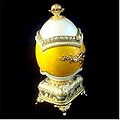Madoka Magica Trivia
This page is about minor facts and observations made throughout the series. For in-depth articles about the setting, please refer to the "Confirmed Theories" category.
You will also find all up-to-date articles (including fan speculations and articles that were proven wrong) on the Articles page.
General
Puella Magi Madoka Magica
Puella Magi was supposed to be latin for "Magical Girl". However, if that was the intended translation, then "Puella Magi" is a mistranslation, and should have been either "Puella Maga" or "Puella Magica".
As-is, "Puella Magi" translates to "Girl of the Sorcerer".
Events of Episode 8 suggest that it may indeed be intentional. Disregarding the verbal gender of "magi" (male mage), when interpreted as "girl [form] of the sorcerer", it fits very well with the fact that Puella Magi are immature forms of witches. It even preserves Kyubey's pun in original Japanese to some extent, although a witch would be more conventionally called "malefica" in Latin, rather than "magus". If interpreted a different way, "the sorcerer's girl", it implies that the girls are being used - which they are, by Kyubey.
- This observation does not take into account that Kyubey, nor any other character in the anime actually says "puella magi." Kyubey says, "mahou shoujo" and an entirely different play on the phrase is made. "Since this country calls women who are still growing up shoujo (少女 girls), for girls who on the way of becoming majo (魔女 witches), it's logical to call them mahou shoujo (魔法少女 magical girls)." Thus in Japanese, the incredible similarity between witches and magical girls is revealed. Moreover, although it not necessarily should be considered canon for the anime series, the Kazumi Magica manga mentions the word "malefica" on one occasion when referring to a witch.
- Unfortunately in the official English subs from Aniplex, Kyubey's implication is completely lost in translation, and sounds puzzling instead.
About the logo

Japanese fans noticed that the font of the kanji "魔法" (mahou, magic) in the show's logo text is heavily stylized, and could be read instead as "廃怯" (hai-kyou, abandon cowardice, hesitation).
The visually valid joke title, "廃怯少女 まどか☆マギカ" (Hai-Kyou Shoujo Madoka Magika), could be translated as "abandon the cowardice/hesitation girl Madoka Magica"
Witch's Labyrinth
The labyrinths consist both of elements from their locations in reality and of allusions to the witches that create them. A labyrinth is a space resembling the magical girl's mental landscape before she became a witch, and the witches' familiars are, just like the labyrinths, projections of the magical girl's heart.
Deeper within the labyrinth, more references to the witch will be seen and fewer elements from reality show up. For example, in episode one, the labyrinth is set in a floor waiting for refurbishing, and thus was filled with 'under construction' signs and barriers. In episode two, the labyrinth is set in an abandoned concrete building, thus the rooms in the labyrinth are made of solid concrete. As the protagonists approach the the final room, elements of a rose garden start to dominate over the construction elements. In episode three, Charlotte's labyrinth has a hospital theme, therefore surgery signs, needles, gallipots and wards are presented first, but deeper in, those are replaced by various kinds of desserts.
Soul Gem and Grief Seed
The pin on top of both soul gem and grief seed is also the emblem of the holder, although Witches have a second symbol used for their witch's kiss and barrier. The seed Gertrud holds has a butterfly emblem, which is shown on her minions and her face when she attempted to attack Mami. Also Gertrud has a pair of Butterfly wings that further proves this theory. Witches also have a second symbol which in Gertrud's case is a rose. Roses are what Gertrud loves the most and roses are seen all through out her barrier (mostly seen with Anthony's carrying them or at the deepest point.)
-
Gertrud's Grief Seed
-
Gertrud's face.
Charlotte's seed has a emblem containing concentric circles with ribbons, representing a strawberry. This is also shown on her minions and the other doll sitting at her table which is stomped on by Homura and may have been Charlotte's true body.
-
Charlotte's Grief Seed
-
Note the similarity of the pin and the doll sitting on the left.
The Soul Gem Mami holds has a flower-like design, which is the same as her hair accessory and transformation effects, as well as the gem's shape when she is transformed.
-
Mami's Soul Gem
-
Note the design of the hair accessory.
While the emblems on the grief seeds are the actual "faces" of the witches, the ones on soul gem could resemble accessories
such as swirls and capes. Also note that the soul gem can abbreviated as SG, while Grief Seed is GS.
It has been additionally observed that the Soul Gems and Grief Seeds are quite similar in design to egg carvings -- particularly Easter Eggs produced by the House of Fabergé in the late 19th Century.
-
A European-style music box comprising of a carved egg. Made in China.
-
The Madonna Lily Egg, a carved Easter Egg created by the House of Fabergé in 1899.
-
A modern imitation of the Fabergé eggs.
-
A modern egg carving, similar in design to a Grief Seed.
In ring form, the soul gem rings bear the owner's given name on them in "archaic" style runes as seen in the witches' barriers. These are the girls' original names - visible on Homura's ring in ep 5 and 10 (HOMURA), and Kyouko's ring in ep 7 (KYOKO.) The girls wear the rings on their left middle fingers.
See Speculah:Grief Seeds for further analysis regarding each Grief Seed seen in the series.
Death of Cyrus Hamlin
The editor of the Norton Critical edition of Goethe's Faust, Cyrus Hamlin, passed away on January 19, 2011, the day before the third episode of Puella Magi Madoka Magica aired. While entirely a coincidence, it is nevertheless a mildly eerie coincidence.
- "I do not expect to attempt yet another revision of my notes to 'Faust' -- for that, alas!, life is too short, as both Wagner and Mephistopheles knew -- but I hope on the basis of what is now nearly four decades of work on Goethe's drama to continue indefinitely my exploration into the riches of this unique and inexhaustible masterpiece of our culture." - Cyrus Hamlin, January 2000
Analyses of canon elements
Architecture
Several backgrounds and buildings of the anime series have been identified as reproductions or possible deformations of real-life landscapes. This article lists all references that were found and are believed to be plausible.
Character Appearance
Listing of character appearances by episode, both as a chronological list and as a summarizing table.
Timeline
Timelines showing the sequences of events and analysis of chronological markers such as moon phases.
Comparison articles
Differences between the anime and manga
This article attempts to list all the plot differences between anime and manga versions of the story.
Episode revisions
This article attempts to list all the revisions made in each episode for webcast and AT-X rebroadcasts, as well as for the disc releases.
Opening Animation Sequence
Minor differences have been noted in the opening sequence when comparing Episode 1 and 2 with the rest (up to Episode 9). The first subtle anomaly noted is in Madoka's transformation sequence: Episodes 3 to 9 feature rotating runes, whereas the runes in Episode 1 and 2 are moving slo-mo to a point they seem motionless. The second anomaly is found near the end of the OP with the city skyline shots - a golden beam of light can be seen shooting skywards from Episodes 3 to 9, but none in Episode 1 and 2. Note that regardless, the camera still panned upward. Both of these anomalies can be seen as being symbolic in nature, but to what degree? That remains to be revealed, but fans have theorized that the beam of light is Madoka's arrow from the final episode. It should be noted that these differences no longer exist in the BD releases of the episodes, because the OP was completely redone for the BD/DVD and used consistently throughout versus the changing OP for the broadcast version which were perhaps production errors.
In Episode 10, the group shot of Mami, Sayaka and Madoka has been updated with Kyouko and Homura in it. Is this a hint that all Puella Magi will perish? The observation is as follows: Mami, Sayaka and Madoka were probably originally meant to meet their end in this timeline (hence their 'obituary' photo), but due to Homura's interference, events meant to happen in this timeline changed. This led to Kyouko sacrificing her life. As of Episode 9, three Puella Magi lost their lives. Now that Homura and Kyouko are featured in the group shot, does that mean Homura will perish in this timeline along with the rest to end the Magical Girl<->Witch cycle? Time will tell...
Observations by episode
- Episode 1
- Episode 2
- Episode 3
- Episode 4
- Episode 5
- Episode 6
- Episode 7
- Episode 8
- Episode 9
- Episode 10
- Episode 11
- Episode 12










